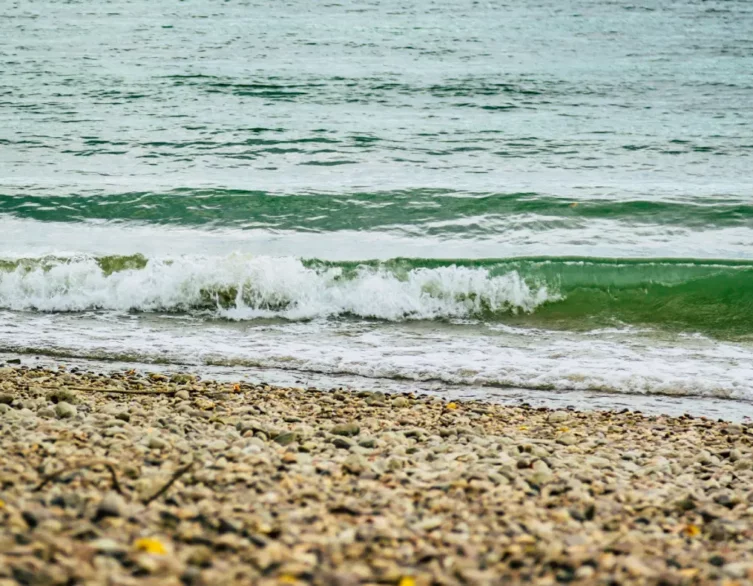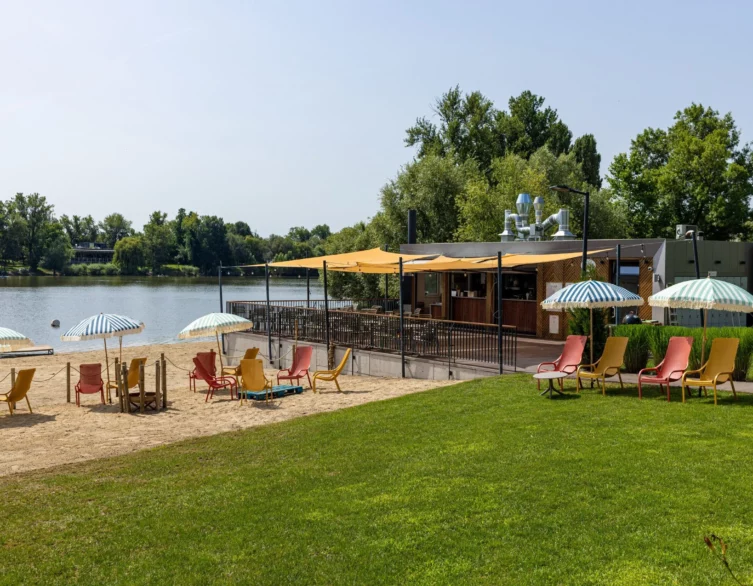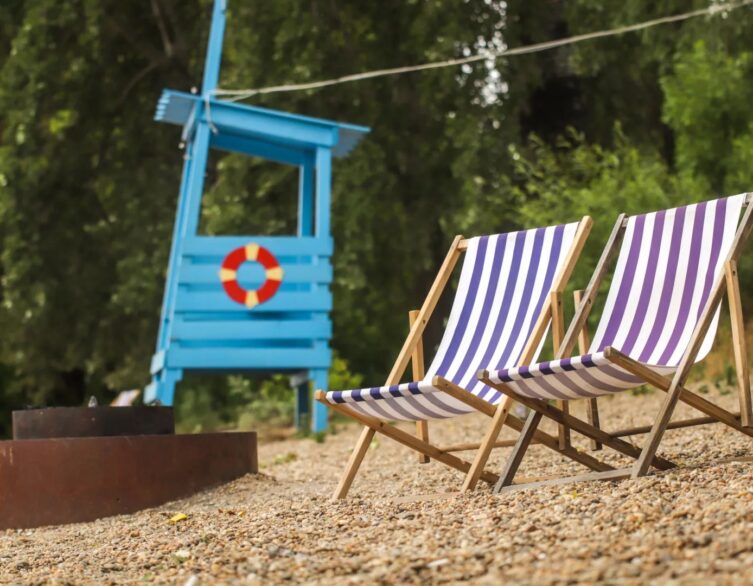Budapest’s Favorite Danube Beach Closes For The Season

It’s time to wave goodbye to the summer season and one of the coolest initiatives in recent years – the Roman Beach or as local call it the Római-parti Plázs. The beach, which has been a real curiosity for years, welcomed visitors who wanted to spend the hot summer days by the water in the city, completely free of charge. It was open every day from June 28 to August 20, 2024, from 10 am to 7 pm.
The Roman Beach opened one day before the 30th anniversary of the signing of the Danube Protection Convention, the international Danube Day. The beach was traditionally the popular and bustling center of aquatic life in Buda. However, due to the deterioration of water quality, the designated bathing areas on the Roman coast were finally closed in 1973.
The realization of this project was not only thanks to the improvement of the Danube’s water quality but also to the persistent work of civil organizations over many years and their close, supportive cooperation with the local government.
The Roman Beach, which enjoys 95% support from the people of Óbuda-Békásmegyer based on the results of the Óbuda consultation, is currently the only natural bathing place in Budapest where visitors can cool off without paying an entrance fee, with constantly monitored water quality. The opening was preceded by a survey of the shoreline, strict official and water quality inspections, professional authority permitting, sand preparation, as well as the inspection and cleaning of the riverbed, resulting in a clean and well-maintained shoreline and built infrastructure awaiting those seeking relaxation.
The local government promised that water quality monitoring would be repeated daily throughout the entire opening period. They stated that if the measurements exceed the safe, bathing-friendly water quality value at any time, they will immediately close the bathing area in compliance with their legal obligations and will only reopen it if the water quality can be guaranteed again based on the measurement numbers. Fortunately, this was not necessary this year.
Swimming was only possible in compliance with strict safety regulations, in the area designated by buoys indicating a water depth of 120 cm, i.e., on the shore section suitable for bathing, during opening hours, every day between 10 am and 7 pm. As members of the Hungarian Red Cross Danube Coast First Aid Service told Óbuda newspaper, based on their experience, there are always people who need to be reminded that they cannot leave the shore section marked by buoys – swimming beyond the buoys is particularly dangerous and can trick even experienced swimmers.
Colorful sun loungers, free drinking water, access to toilets, changing rooms, and showers, as well as free bicycle storage were provided for beach visitors. The care of the Roman Beach was provided by a beach guard, and night guards were also on duty in the area.
Best deals of Budapest
The district newspaper wrote about the beach that a foam mat or rubber mattress is recommended because the sun loungers run out quickly, and even the use of water shoes is not a bad idea on the pebbly shore section. However, there is no need to worry about glass shards or similar hazards.
The water was fenced off for bathing in a strip of about six to eight meters, not wider because the water deepens quickly to the buoys, but the current is not strong even at the mentioned 120 cm buoy, so it fully meets the requirements for safe bathing.
The biggest strength of the Roman Beach, the newspaper noted – apart from the fact that it is the only free Danube bathing place in Budapest – is the tranquility. Not only because the view from the opposite Pest side is an unbuilt, floodplain forested shore section, but also because the immediate surroundings of the beach are not flooded with vendors, stalls, advertisements, and an arsenal of entertainment services.
On the Budapest section of the Danube, however, the water quality is theoretically excellent, yet there are only two places for dipping (and temporarily, during the Sziget Festival, you can also bathe at the Óbuda Island tip) – one is the aforementioned Roman Beach, and the other is the paid beach at Kopaszi Dam, which belongs to the interests of István Tiborcz.
Why can’t we swim in many more places in the Danube in Budapest, asked the question that has been on many people’s minds, including 444. The river is also more favorable because, unlike Lake Velence, which heats up to 30 degrees, the water of the Danube is only 24-25 degrees even during the hottest periods.
As Miklós Tömör, the founder of Valyo (City and River Association) and one of the creators of the Óbuda beach, also told Klubrádió, based on their measurements, they concluded that out of the 120 warmer days of the year, the water of the Danube would be suitable for bathing on 100 days. Although in small steps, according to Tömör, aquatic sports and bathing in the Danube can restart.
Based on the attendance of the Roman coast, there would definitely be a demand for expansion: the 500-meter shoreline is always full, especially during the heat waves. With an appropriate water quality forecasting system, Tömör sees no obstacle to allowing bathing on additional shorelines.
Related news



















